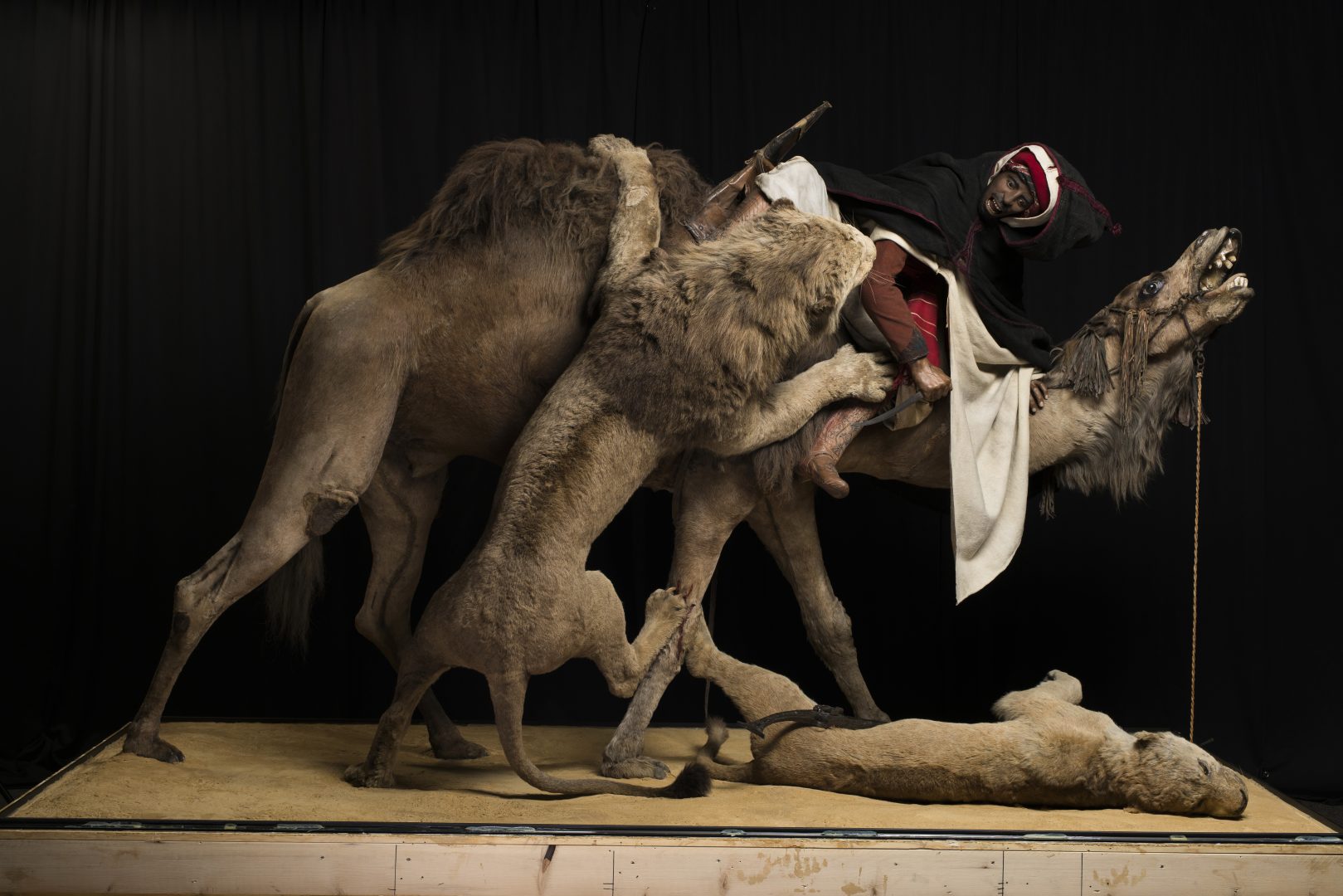
This undated photo provided by Carnegie Museum of Natural History shows the the 19th century "Lion Attacking a Dromedary" display at the Carnegie Museum of Natural History in Pittsburgh.
Joshua Franzos / Carnegie Museum of Natural History via AP

This undated photo provided by Carnegie Museum of Natural History shows the the 19th century "Lion Attacking a Dromedary" display at the Carnegie Museum of Natural History in Pittsburgh.
Joshua Franzos / Carnegie Museum of Natural History via AP

Joshua Franzos / Carnegie Museum of Natural History via AP
This undated photo provided by Carnegie Museum of Natural History shows the the 19th century "Lion Attacking a Dromedary" display at the Carnegie Museum of Natural History in Pittsburgh.
(Pittsburgh) — A Pittsburgh museum has returned to public view a 19th-century diorama that shows lions attacking a camel and its human rider, about a year after covering it up in response to complaints about how the courier was depicted.
The Pittsburgh Tribune-Review reported Friday that a curtain around “Lion Attacking a Dromedary” at the Carnegie Museum of Natural History was removed a week ago and information was posted to address the controversy.
The paper said the decision was made by museum director Gretchen Baker.
X-rays have confirmed that the figure contains a human skull and jaw, presenting an ethical problem for the museum, which does not know where those remains originated. The courier’s costume has been determined to be derived from at least five separate North African cultures.
A new sign tells museum patrons that the exhibit, which vividly depicts two lions attacking a camel and its knife-wielding rider, is popular but reinforces stereotypes.
“For the present, the museum is keeping the diorama on display,” the sign reads. “We want to engage with visitors, staff, and community members to listen and learn from you as we consider the future of this diorama.”
Baker told the paper the curtains “were more harmful than not having them up at all,” and in hindsight covering the exhibit may not have been the right approach.
When a visual barrier was installed in late June 2020, the museum’s interim director at the time, Stephen Tonsor, said some people of color had complained about seeing the image of a courier being attacked in a prominent spot in the facility.
It was covered for three months, and since September visitors have had to step behind a curtain to see it.
The diorama was built by French naturalist and taxidermist Edouard Verreaux and his brother, Jules, for the 1867 Paris Exposition.
It has been at the Carnegie since 1899.

A collection of interviews, photos, and music videos, featuring local musicians who have stopped by the WITF performance studio to share a little discussion and sound. Produced by WITF’s Joe Ulrich.
The days of journalism’s one-way street of simply producing stories for the public have long been over. Now, it’s time to find better ways to interact with you and ensure we meet your high standards of what a credible media organization should be.